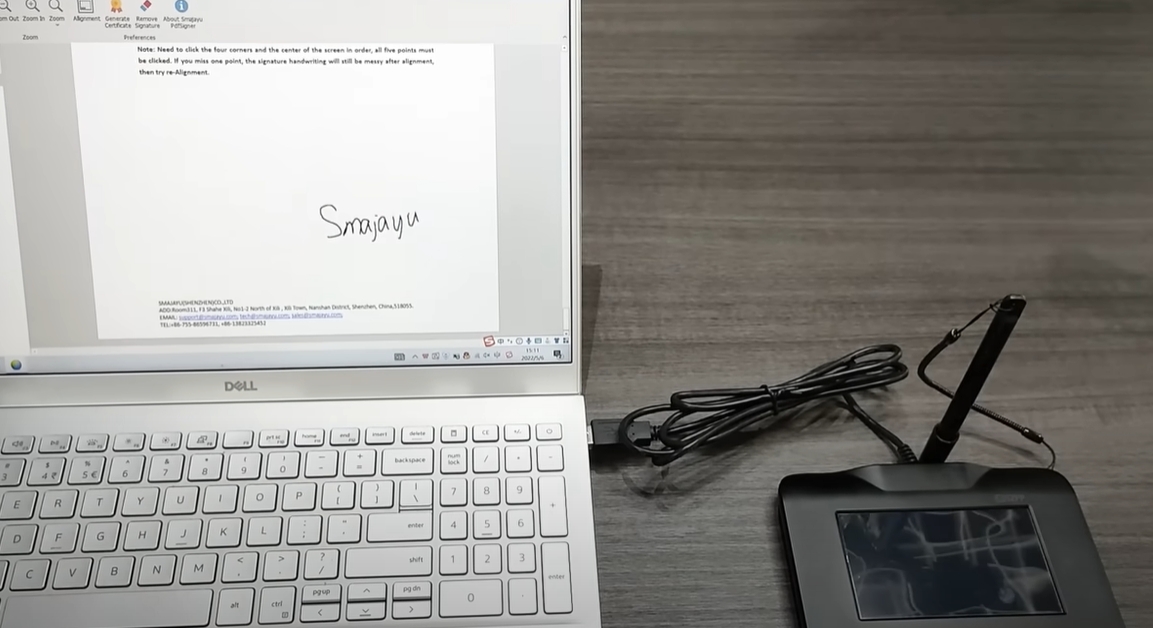Lawyers' daily work involves signing numerous documents (such as engagement agreements, evidence materials, and legal documents). As a digital tool, electronic signature pads can empower lawyers by optimizing the signing process, improving document management efficiency, and enhancing compliance. The following are specific application scenarios and efficiency-enhancing strategies:

1. Optimizing Client Communication and Engagement Processes: Reducing the Cost of Remote Collaboration
Remotely Sign Engagement Agreements, Shortening Contract Signing Timelines
Traditionally, remote clients must mail paper engagement agreements, which takes 3-5 days to complete and can lead to rework due to errors.
Electronic signature pad Solution: After confirming the client's identity via video conferencing, the lawyer synchronizes the electronic engagement agreement to the client's electronic signature pad (or an online platform that supports handwritten signatures). The client signs in real time, and the system automatically records the signing time, trajectory, and identity verification information (such as facial recognition and mobile phone number verification). Once signed, the document becomes effective immediately and is synchronized to the law firm's cloud, reducing contract signing timelines from days to minutes.
Applicable Scenarios: High-frequency client documents such as legal advisory contracts, case engagement agreements, and risk disclosures.
Batch signing of client documents reduces duplication of effort.
For batch cases (such as similar cases and group disputes), lawyers need to sign similar documents with multiple clients (e.g., power of attorney, evidence list confirmation).
Electronic signature pad solution: Preset document templates are available in the law firm management system, allowing batch import of client information to generate personalized documents. Clients then sign sequentially through the electronic signature pad. The system automatically links and archives the documents, eliminating the tedious process of manual printing, distribution, and collection, reducing paper waste and human error.
2. Improving Case Handling Efficiency: Adapting to Electronic Case Handling Scenarios
Fast signing and submission of litigation documents, integrating with the court's electronic platform
After the court implemented "Smart Court," documents such as indictments, defense statements, and attorney statements must be submitted through the electronic litigation platform. Traditionally, lawyers print and sign documents, then scan and upload them, which can lead to issues such as blurry scans and formatting errors.
Electronic signature pad Solution: After drafting documents in the case handling system, lawyers can sign them directly using the electronic signature pad. The system automatically generates a signed PDF file in a format that meets court requirements and can be uploaded directly to the e-litigation platform, eliminating the multiple steps of "printing, signing, scanning, and uploading" and reducing the need for revisions due to formatting issues.
Benefits: This system can save 1-2 hours of processing time, especially when urgently submitting documents before a court hearing.
Signing and solidifying evidence enhances compliance.
Lawyers need to sign and confirm documents such as copies of evidence, explanations of evidence, and cross-examination opinions. Traditional paper signatures must be scanned and archived, making them prone to loss or tampering.
Electronic signature pad Solution: When signing documents related to evidence using the electronic signature pad, the system automatically links the evidence number and signing time, and connects to blockchain evidence storage platforms (such as Ant Chain and FaDaDa), creating an unalterable chain of evidence. Subsequent evidence presentation in court allows direct access to electronic documents and evidence storage reports, reducing the cost of carrying and storing paper evidence and the risk of its authenticity being challenged.

By shortening signing cycles, optimizing document management, and enhancing compliance, electronic signature pads help lawyers reduce duplication of work, lower the cost of remote collaboration, and adapt to the trend of digital case handling. In practical applications, they should be flexibly used based on case type, client needs, and legal provisions, achieving a balance between the necessary retention of paper documents and the efficient empowerment of electronic signatures, ultimately improving the efficiency and quality of legal services. With the deepening digitalization of the judicial system, electronic signature pads will become an indispensable office tool for lawyers.